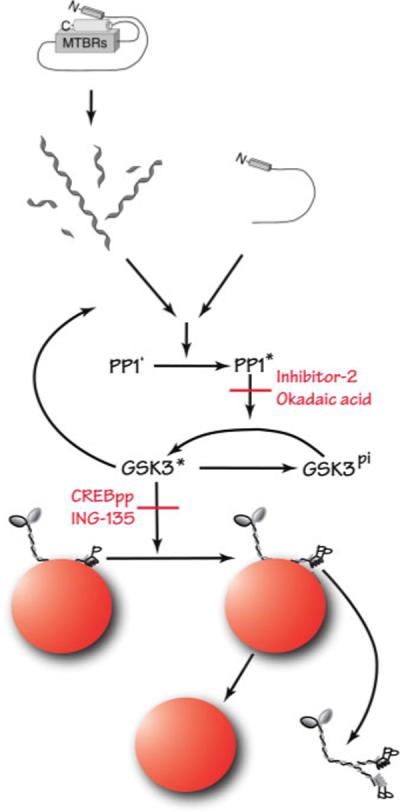Fig. 10.

Proposed mechanism underlying tau filament-induced inhibition of anterograde FAT. Pharmacological experiments presented here indicate that FAT inhibition requires the activity of PP1 and GSK-3. We have previously described a pathway in which PP1 dephosphorylates and activates GSK-3, which subsequently phosphorylates kinesin light chains (KLCs). Phosphorylation of KLCs promotes a chaperone-mediated detachment of kinesin-1 from its transported cargo. Our results suggest that tau can trigger this cascade when the amino terminus of tau is abnormally exposed in the filamentous form. [Color figure can be viewed in the online issue, which is available at www.interscience.wiley.com.]
